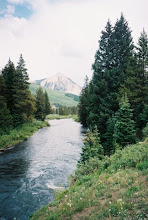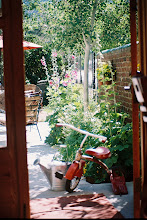Journal Entry: Seventeen, Alpine Tunnel Hike
In the late 1873 the Denver, South Park, and Pacific Railway Company (D,SP, &P) formed in central Colorado. In 1879, a six month contract was awarded to the M. Cummins & Company to construct the Alpine Tunnel. This tunnel was to be a thirteen mile, two hundred foot wide right of way between the town sites of Quartz (in Gunnison County) and Hancock (in Chaffee County). At an altitude of 11,523 ft., it became the first tunnel constructed through the Continental Divide. The construction company and railroad shipped into Colorado thousands of Chinese migrant workers to help build this track. The construction began in July, 1880. The final construction ended in November of 1881 and the first train passed through the tunnel. This train carried supplies from the east side of the Continental Divide to the west side into Gunnison County. This railway was a narrow gauge track; 3ft. 0 in. was its width. These narrow tracks were substantially cheaper to build, equip, and operate than standard gauge or broad gauge railways, particularly in mountainous terrain. Narrow gauge railways have specialized use in mines and especially in Colorado in the 1800’s. In 1884 a major avalanche destroyed one of the small towns on the route so from 1887-1889 the tunnel closed for the winter months. In 1894 the DL&G railroad went into receivership. In 1885 four crew members were suffocated during the tunnel reopening. These continued to be a series of unfortunate events after this as, an engine house fire and a train collision in the tunnel in 1906.
Another reason for the demise of this railway was construction of modern roads in the Rockies that led to a decrease in revenue and traffic. The last train through the Alpine Tunnel was in November 1910. This was due to damage in the tunnel, and it not being worth repairing with a lack of traffic as the line failed to get much further beyond Gunnison on the west side.
The old rail bed was converted into a road by the Mile_Hi Jeep club in 1967. In 1995, the Forest Service and the Alpine Tunnel Historic District began restoration project of this area. Now both ends of the tunnel are an every day Joe’s favorite hike.
The rail bed is a slowly climbing 3% grade that ends at the opening in the mountain where the tunnel began. This is a historical site that has been filled in with rocks. The old rail bed is now a hiking trail on each side of the Divide. Hikers have a breathtaking view of a large gulch with high mountain saddles. This rail bed traverses along side the slope of Hancock Pass and has a continuous flow of rain water trickling down the embankment. Every minute crack and cranny has some variety of flowers growing in the rock in the summer. The entire hike looks like a well planned, but natural wildflower terrarium. The flowers seen here are Columbine, pussytoes, geraniums, purple fringe, goldenweed, alpine sulphur flower, arnica and wild strawberries.



No comments:
Post a Comment